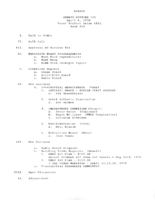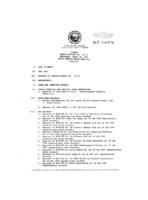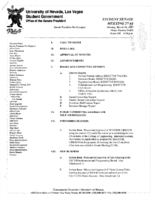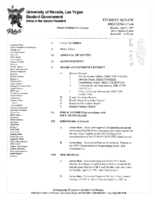Search the Special Collections and Archives Portal
Search Results

Transcript of interview with Thomas Barbarite by Dennis Chamberland, March 3, 1981
Date
Archival Collection
Description
Text

Transcript of interview with Barbara Barnett by Charles Chesnutt, March 8, 1981
Date
Archival Collection
Description
Text

Transcript of interview with Lendon Kaye Barney by Kelly Adams, March 3, 1978
Date
Archival Collection
Description
Text

Transcript of interview with John Brooks by Jeff Kennedy, February 28, 1979
Date
Archival Collection
Description
Text

Transcript of interview with Charles Adams by Mike Lommori, February 28, 1980
Date
Archival Collection
Description
Text

Meeting minutes for Consolidated Student Senate, University of Nevada, Las Vegas, April 4, 1978
Date
Archival Collection
Description
Text
Hughes XF-11 photographs, 1946-1947
Level of Description
Scope and Contents
Materials contain photographs of the Hughes XF-11 prototype military reconnaissance aircraft. Howard Hughes piloted the two XF-11 prototypes built: in July 1946, Hughes crashed the first XF-11 in Beverly Hills, California; in April 1947, Hughes successfully flew the second prototype at high speeds and at high altitudes. However, the United States Air Force abandoned the controversial project, and in August of 1947, Hughes was called to testify before the Truman Committee in the U.S. Senate about the failures of the program.
Archival Collection
Collection Name: Howard Hughes Professional and Aeronautical Photographs
Box/Folder: N/A
Archival Component

Meeting minutes for Consolidated Student Senate University of Nevada, Las Vegas, April 28, 1993
Date
Archival Collection
Description
Text

Meeting minutes for Consolidated Student Senate University of Nevada, Las Vegas, March 10, 1997
Date
Archival Collection
Description
Text

Meeting minutes for Consolidated Student Senate University of Nevada, Las Vegas, April 1, 1997
Date
Archival Collection
Description
Text
